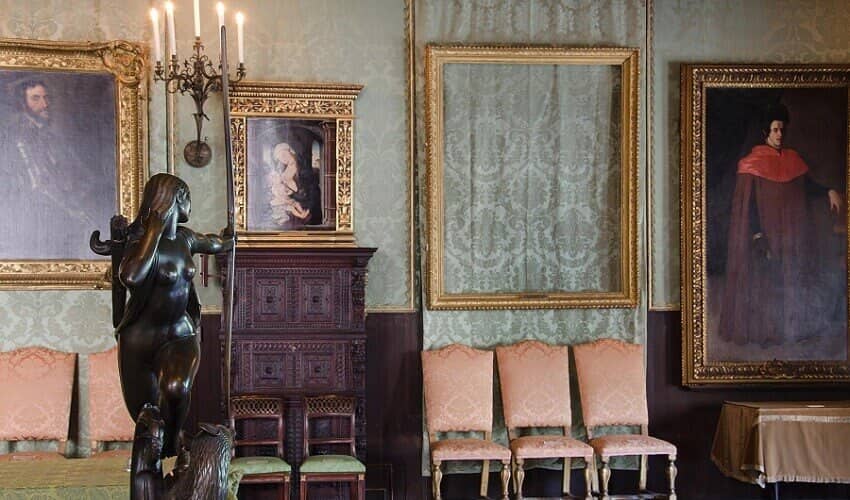The Storm on the Sea of Galilee, 1633 by Rembrandt

During the 1630s, just when Rembrandt came to Amsterdam to begin his career in earnest, he painted what many consider his most dramatic works. The Storm on the Sea of Galilee exemplifies this type of work. Rembrandt chose a story from the
Bible perhaps to show the seriousness of his artistic intentions. He came to Amsterdam fully intending to become known as an artist of only history paintings and portraits. However, he created this painting using a maritime theme. He
demonstrated that he could combine a history painting with a seascape using a story from the New Testament. The Storm on the Sea of Galilee is Rembrandt's only seascape.
This episode from New Testament would be one familiar to people of Rembrandt's time and one also, in all likelihood, appreciated by them. However, the dramatic tension instilled in the painting would provide the story with an entirely
new and startling interpretation. This example of experimentation and risk-taking by the then twenty-seven-year old Rembrandt distinguished him from his peers and became the hallmark of his artistic progression.
It is during an intense and violent storm that the disciples of Christ became terrified. The small boat upon which they are sailing is about to become engulfed in a wave on the Sea of Galilee. Christ, who is seated at the stern, is awoken
and appears to admonish the disciples just as he is about to command the storm to stop. It is this miracle that Rembrandt depicts. The mast of the ship points toward two corners of the painting. This serves to divide the painting into
two triangles. In looking at his left triangle, it can be seen that Rembrandt invests in that space certain elements of the event about to occur--the crashing waves, the boat high in the air and several paintings characters in various
states of distress. However, he also places a dramatic yellow light that opens hopefully in the distance, drenching the edge of the clouds and the ships mainsail. The right side of the diagonal is darker and more obscured, yet to be
bathed in the light, a striking example of Rembrandt's chiaroscuro style.
In an allegorical sense, the work also illustrates the power of nature and man's helplessness in its force. Numbered among the twelve disciples were fisherman and sailors; however, in this scene they are powerless and exposed to elements.
They can only hang on. One holds his hand over the side while others futilely attempt to steady the boat, the man on the left putting one hand to his hat and the other to the rigging is said to have the face of Rembrandt. It has been
theorized that Rembrandt's point in this is to put himself in the event through his imagination to inspire faith in the Biblical text, affirming its occurrence.

The Storm on the Sea of Galilee was previously in the Isabella Stewart Gardner Museum in Boston. Early in the morning of March 18, 1990, two thieves disguised as police officers robbed the museum of thirteen works worth some $500 million - the greatest known property theft in history. Among the works was The Storm on the Sea of Galilee, Rembrandt's only known seascape. Also missing is The Concert, one of only 34 known by Johannes Vermeer. The museum still displays the paintings' empty frames in their original locations, and the heist remains unsolved.




















